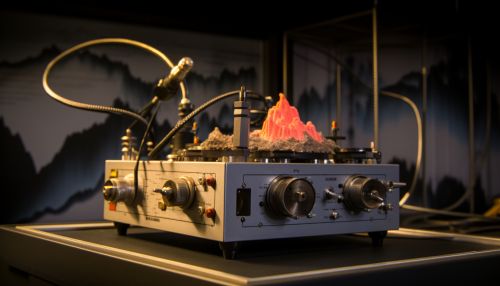The Science of Earths Seismic Activity and Tectonic Movements
Introduction
The planet Earth is a dynamic entity, its surface constantly reshaped by the forces of plate tectonics and seismic activity. These processes are the result of the Earth's internal heat engine, which drives the movement of the Earth's lithospheric plates and the release of energy in the form of earthquakes. This article aims to provide a comprehensive and detailed exploration of these phenomena, delving into the science behind Earth's seismic activity and tectonic movements.


Plate Tectonics
The theory of plate tectonics is a fundamental concept in geology that explains the large-scale movements of Earth's lithosphere. The lithosphere is divided into several large and small 'plates', which move relative to each other on the Earth's more fluid asthenosphere. This movement is driven by the heat generated from the radioactive decay of elements within the Earth's mantle and core.
Plate Boundaries
There are three types of plate boundaries: divergent, convergent, and transform. Divergent boundaries occur when two plates move apart from each other, creating a gap where magma rises to form new crust. Convergent boundaries occur when two plates move towards each other, resulting in one plate being forced beneath the other in a process known as subduction. Transform boundaries occur when two plates slide past each other horizontally.
Plate Movements and Earthquakes
The movement of tectonic plates is not smooth but occurs in a series of jerks. These jerks are caused by the frictional resistance at the plate boundaries, which prevents the plates from sliding past each other smoothly. When the stress accumulated at the boundary exceeds the frictional resistance, the plates suddenly slip, releasing the stored energy in the form of an earthquake.
Seismic Activity
Seismic activity refers to the frequency and magnitude of earthquakes experienced over a period of time in a specific area. This activity is primarily associated with tectonic processes, but can also be triggered by volcanic eruptions, landslides, or even human activities such as mining or reservoir-induced seismicity.
Earthquake Generation
Earthquakes are generated when stress within the Earth's crust is released in a sudden burst of energy. This stress is often built up over time as tectonic plates move and interact with each other. When the stress reaches a critical level, it is released in the form of seismic waves that radiate out from the earthquake's epicenter.
Seismic Waves
There are three main types of seismic waves: P-waves, S-waves, and surface waves. P-waves, or primary waves, are the fastest seismic waves and the first to be detected by seismometers. S-waves, or secondary waves, are slower than P-waves but more destructive due to their larger amplitudes. Surface waves, which include Love and Rayleigh waves, travel along the Earth's surface and cause the most damage during an earthquake.
Measuring and Predicting Earthquakes
The study of earthquakes involves measuring their magnitude and intensity, and attempting to predict their occurrence. The Richter scale and the moment magnitude scale (Mw) are commonly used to quantify the energy released by an earthquake. The Mercalli intensity scale is used to describe the effects of an earthquake at specific locations.
Despite advances in our understanding of tectonic processes and seismic activity, predicting the exact time, location, and magnitude of an earthquake remains a challenge in earthquake prediction.
Impact of Seismic Activity and Tectonic Movements
The movement of tectonic plates and the associated seismic activity have profound impacts on the Earth's surface and its inhabitants. These processes shape the Earth's landscape, form mountains, cause volcanic eruptions, and trigger devastating earthquakes. Understanding these processes is crucial for mitigating the risks associated with seismic hazards and for the sustainable development of our planet.
